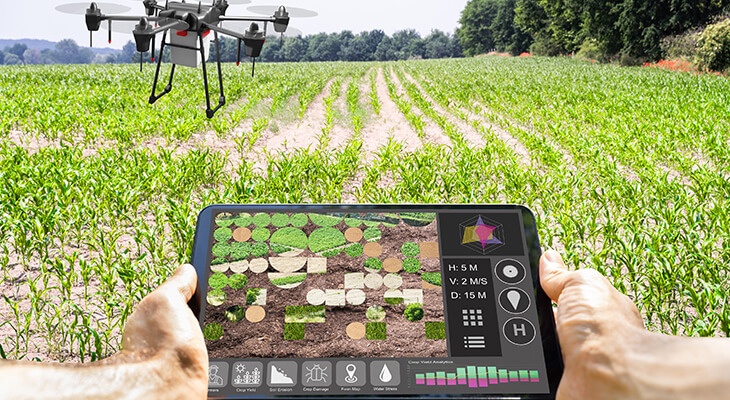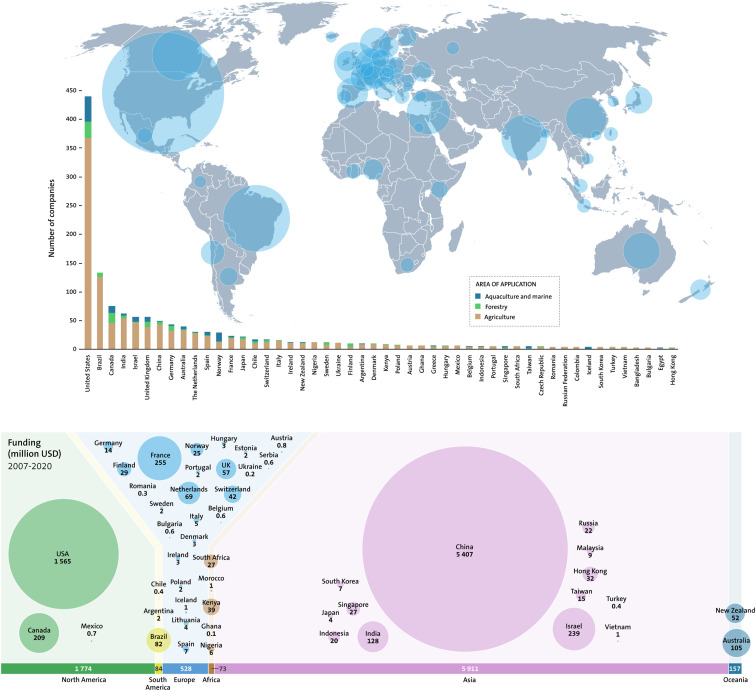NEWS • 2021-10-01
AI in farming can create new sustainability risks
The growing use of AI-technologies offers opportunities for ramped up sustainability efforts, but there are also numerous poorly explored and serious systemic risks as humans, machines and ecosystems interact in new ways. This is the main message from a new study looking into the global uptake of AI-technologies in farming, forestry and the marine sector.

Photo: IStock
“While applications of AI could lead to more effective uses of land- and seascapes, improved environmental monitoring, and increased transparency in supply chains, it could also create a number of new emerging risks for both people and nature,” says lead author Victor Galaz, programme director of Beijer Institute programme “Governance, Technology and Complexity” and deputy director of the Stockholm Resilience Centre.
The study, which is published in the journal Technology in Society, also presents new data about where in the world AI-technologies for sustainability is diffusing.
“Our analysis shows that the most rapid development is unfolding in farming, with substantial investments in these technologies in China and the United States in particular,” says Victor Galaz.

Geographical and sectoral distribution of companies that develop AI technologies (IoT, sensors, robotics and analytics) for agriculture forestry and aquaculture. USA has the largest number of companies, but China dominates in terms of investments.
Need to address gap
Artificial intelligence in combination with sensor technology and robotics are increasingly being applied in agriculture, forestry and marine resources extraction. In these sectors with high impact potential for sustainability, the study explores emerging systemic risks in four areas:
1) Algorithmic bias and allocative harms
For example, the training data and the resulting model may be developed and suitable for a large industrial farm in a data rich context, while using it as decision-support for a small-scale farm in a low-income country could lead to flawed and damaging results.
2) Unequal access and benefits
Due to the global “digital divide” small-scale farmers in less wealthy countries often face serious obstacles to access big data and mobile technologies, which is likely to distribute the benefits of AI-technologies in unequal ways.
3) Cascading failures and external disruptions
One example is how “Virtual farms,” using AI and big data from sensors, often require cloud storage, susceptible to breaches. Earlier this year, this risk was manifested in cyberattacks forcing the shutdown of numerous meat plants in the U.S.
4) Trade-offs between efficiency and resilience.
Using AI-technologies to increase efficiency and productivity of a particular crop, tree or seafood species, risks undermining overall system functioning and resilience. This has proven to cause abrupt, unwanted, and sometimes irreversible changes in ecosystems.
The study is the result of a collaboration between the Beijer Institute, Stockholm Resilience Centre and Princeton Institute for International and Regional Studies. Two workshops in 2019 gathered a number of experts and formed the basis for the study. Authors include researchers from Cornell University, CGIAR Platform for Big Data in Agriculture, Graz University of Technology, and University College London.
The article concludes that current interest in principles for “responsible AI” could do much more to integrate environmental sustainability dimensions. Most emphasis so far has been on social aspects.
“If we are serious about using AI for sustainability, this is a gap that needs to be addressed urgently,” says Victor Galaz.
Watch video on the sustainability opportunities and challenges with AI and new technology:
NEWS



